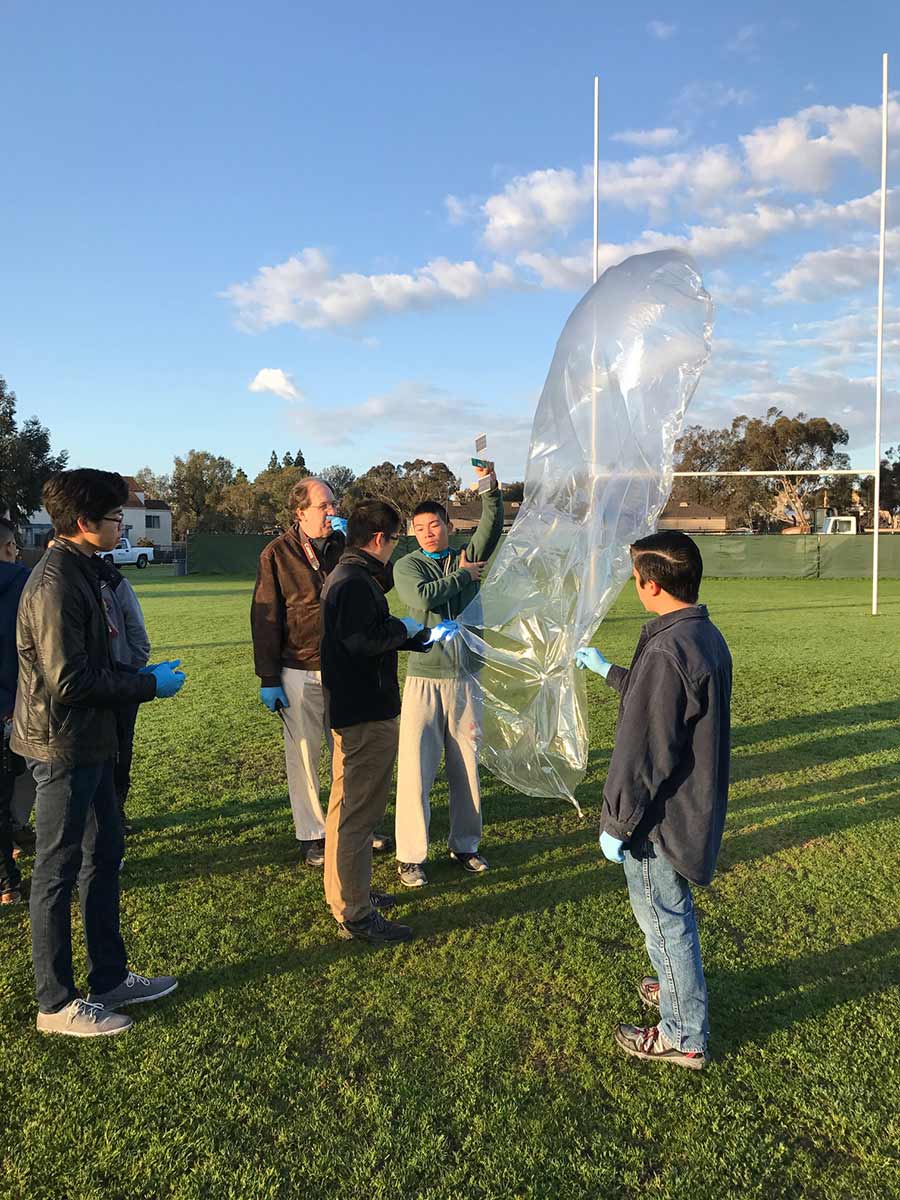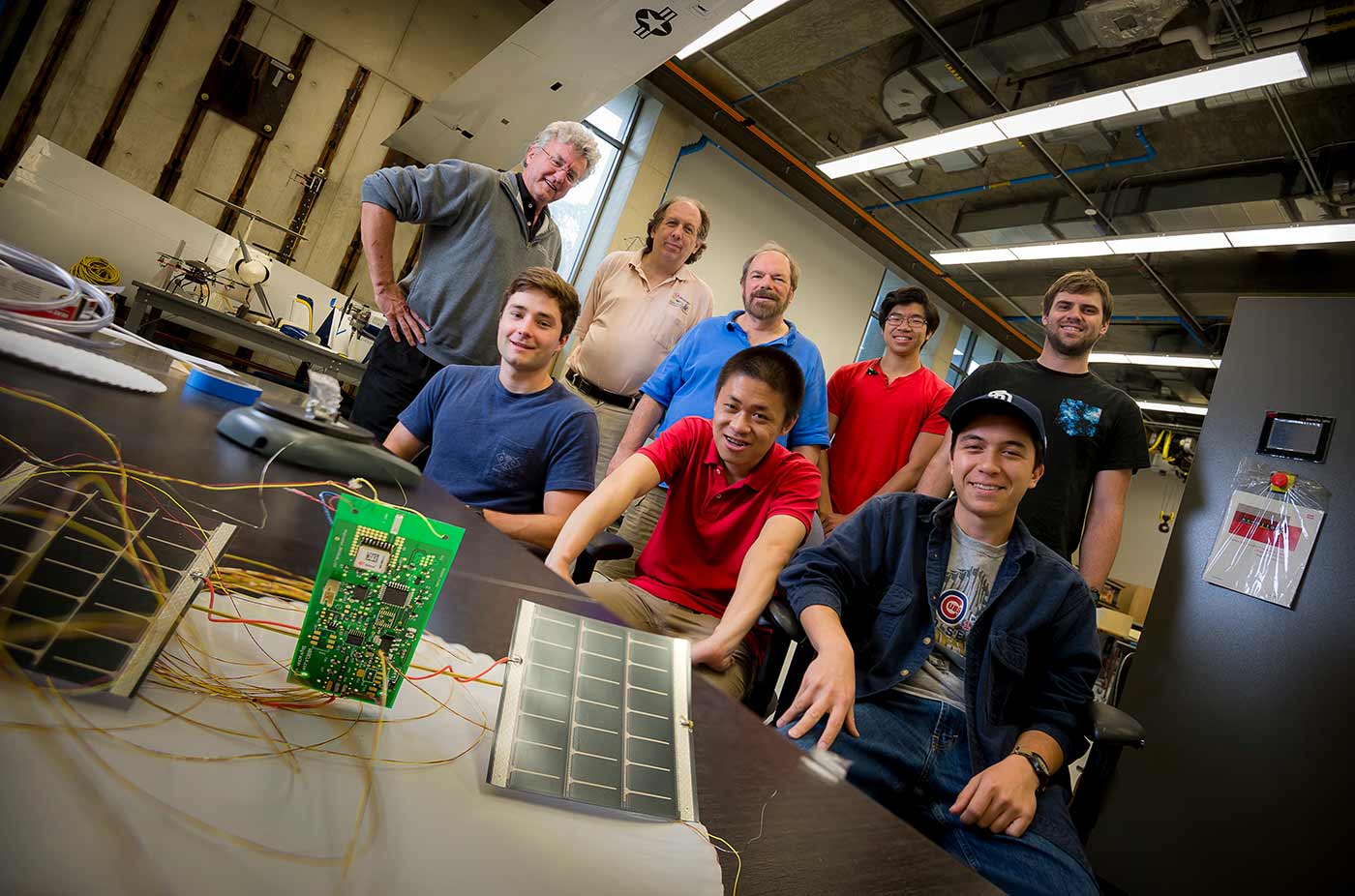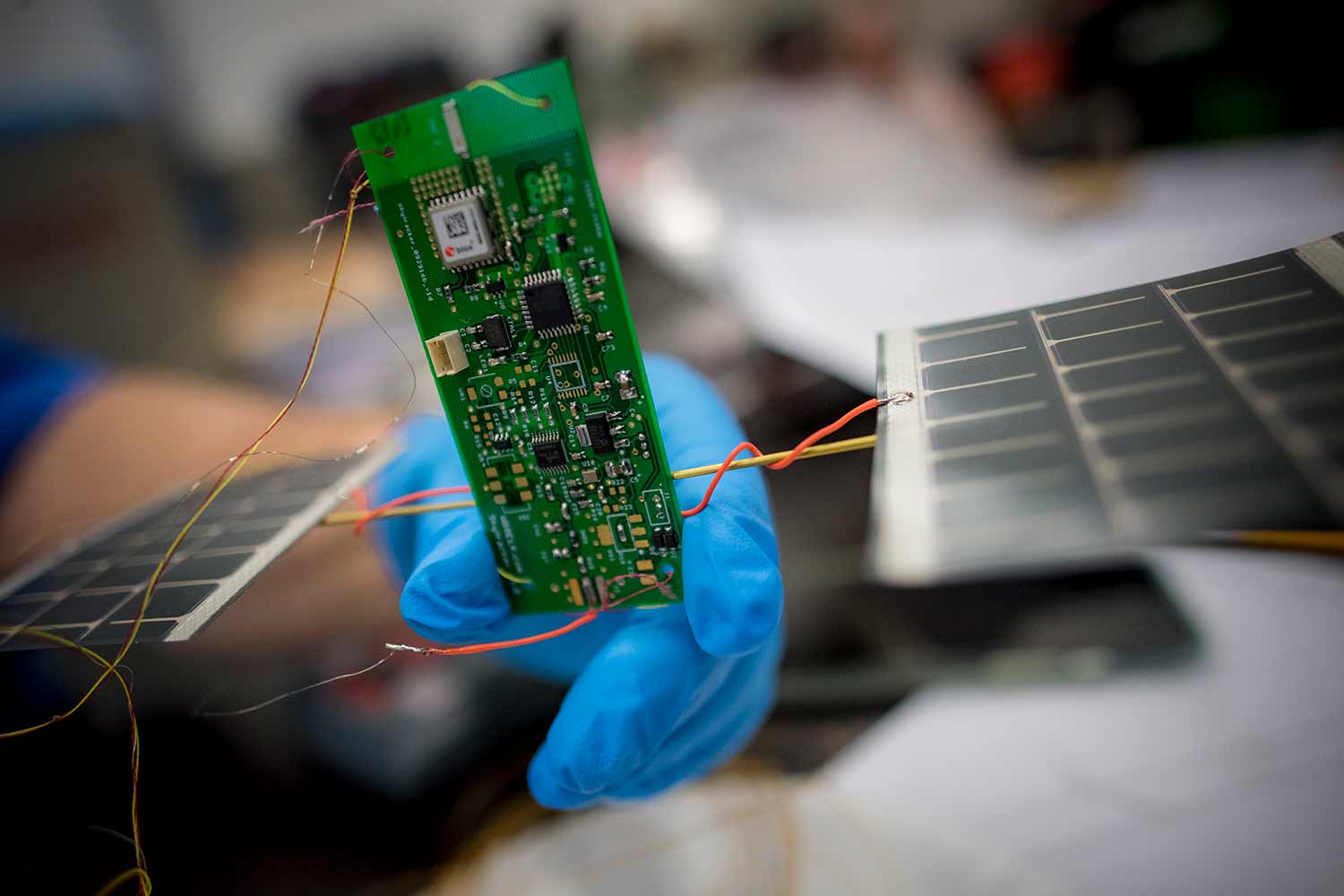
By:
- Deborah L. Jude
Published Date
By:
- Deborah L. Jude
Share This:
Six Times Around the World: UC San Diego Researchers Send a Balloon Around the Globe

From left to right: Matt Ho, Phil Karn, Zhaowei Yu, Brian Wong, Dan Mc Farland launch balloon on February 12, 2017 from campus.
Somewhere over the Pacific Ocean, just above commercial air traffic, a small, hydrogen-filled balloon is reporting on its whereabouts to researchers in a UC San Diego lab who are listening intently. The balloon—called a super pressure balloon—was launched by a group of UC San Diego students and researchers about 100 days ago from campus and is on its sixth lap around the globe.
This is the first time a balloon from UC San Diego has made it across the country—let alone the world. The February 12 launch is part of a unique program headed by structural engineering professor John Kosmatka and supported by NASA’s California Space Grant Consortium.
“The program is meant to inspire students to pursue science and engineering by involving them and their educators in hands-on experiments that venture to the edge of space,” said Kosmatka.
Now that they’ve been successful flying a balloon around the world, the team of students and researchers hopes to be able to hold public launches to help get kids excited about science.
“For most kids, near-space ballooning is the closest they can get to space,” said Ellis. “These small super pressure balloons are functionally orbiting the earth for a fraction of the cost it takes to build a cube satellite.”

BACK ROW LEFT TO RIGHT: Professor John Kosmatka, Phil Karn, Karl Cain, Matt Ho, Spencer Ellis FRONT ROW LEFT TO RIGHT: Robert Rupp (goes by RJ), Zhaowei Yu, Dan Mc Farland
The hydrogen-filled super pressure balloon was launched by a group of UC San Diego undergraduates, a graduate student, Kosmatka and mentors Karl Cain and Phil Karn on February 12, with the hopes of it reaching Europe. The balloon is about 3 feet wide and 7.5 feet tall.
“Flying a balloon across the country has been a goal for us for awhile,” said Spencer Ellis, fourth year mechanical engineering graduate student and the lead researcher on the project.
Anyone can track the location of the balloon via tracker.habhub.org and selecting balloon (KK6PNN-5). As of June 6, the balloon was hovering near Beijing, China.
“I’ve learned a lot about the technology. I never realized how much wind is a factor in near-space ballooning,” said undergraduate computer engineering student Matt Ho.

UC San Diego students and researchers launched a balloon carrying a small, solar powered transmitter about 100 days ago, and it's on its sixth lap around the globe.
The balloon is carrying a small, minimalistic payload designed by high-altitude balloon expert Bill Brown that weighs 11 grams. It contains a microcontroller that reads GPS and temperature sensors, which are encoded by a solar-powered transmitter so it can be tracked. By keeping the cost ultra low, UC San Diego students and researchers can use the balloons and payloads for small research projects and STEM outreach.
According to Ellis, being able to track the balloon is an exciting way for kids to learn about the world. “As they follow the balloon’s progress, they can imagine where it is and look up facts and pictures about the places the balloon has been to.”
In the future, the researchers hope to add additional sensors for atmospheric monitoring, so that they can track things like pollution coming from airplanes and validate weather patterns.
Share This:
You May Also Like
Stay in the Know
Keep up with all the latest from UC San Diego. Subscribe to the newsletter today.


